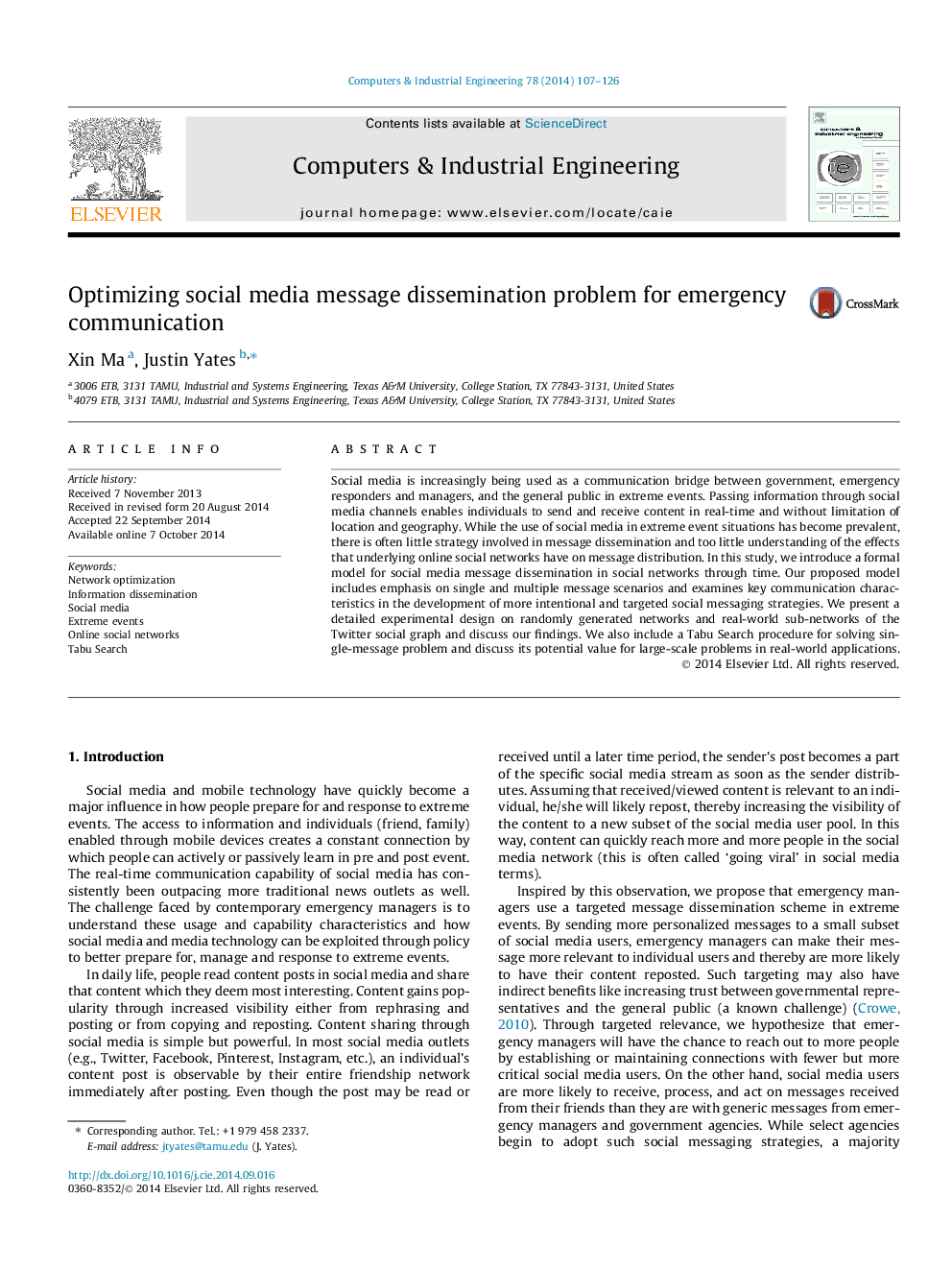| Article ID | Journal | Published Year | Pages | File Type |
|---|---|---|---|---|
| 1133689 | Computers & Industrial Engineering | 2014 | 20 Pages |
•Derive mathematical formulation to model social media message dissemination.•Large experimental design using random and real-world (crawled) social media networks.•Observe strong correlations between message reception time and node degree.•Node delay consistently affects message reception time.•Random networks over-estimate message dissemination and model performance.
Social media is increasingly being used as a communication bridge between government, emergency responders and managers, and the general public in extreme events. Passing information through social media channels enables individuals to send and receive content in real-time and without limitation of location and geography. While the use of social media in extreme event situations has become prevalent, there is often little strategy involved in message dissemination and too little understanding of the effects that underlying online social networks have on message distribution. In this study, we introduce a formal model for social media message dissemination in social networks through time. Our proposed model includes emphasis on single and multiple message scenarios and examines key communication characteristics in the development of more intentional and targeted social messaging strategies. We present a detailed experimental design on randomly generated networks and real-world sub-networks of the Twitter social graph and discuss our findings. We also include a Tabu Search procedure for solving single-message problem and discuss its potential value for large-scale problems in real-world applications.
